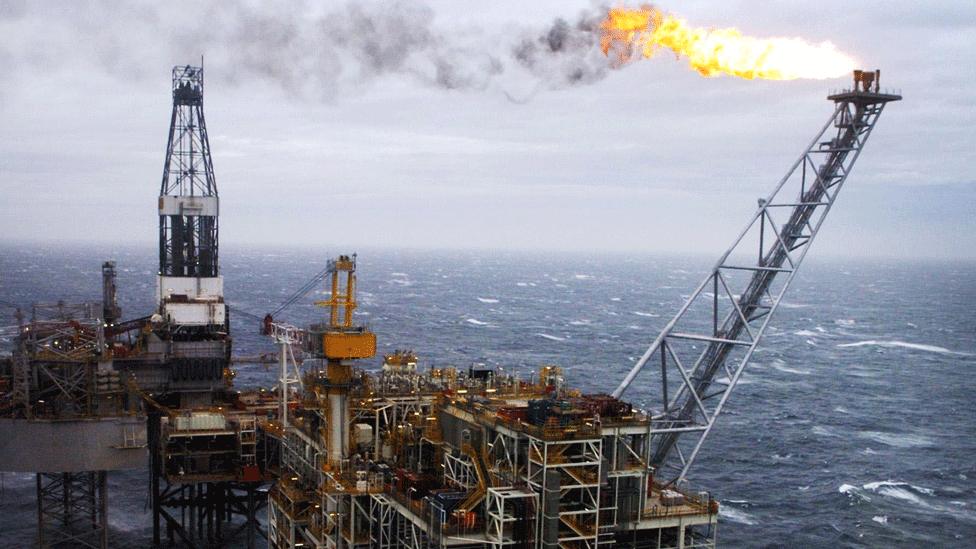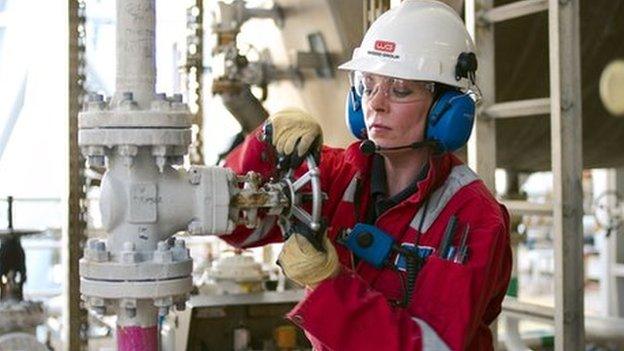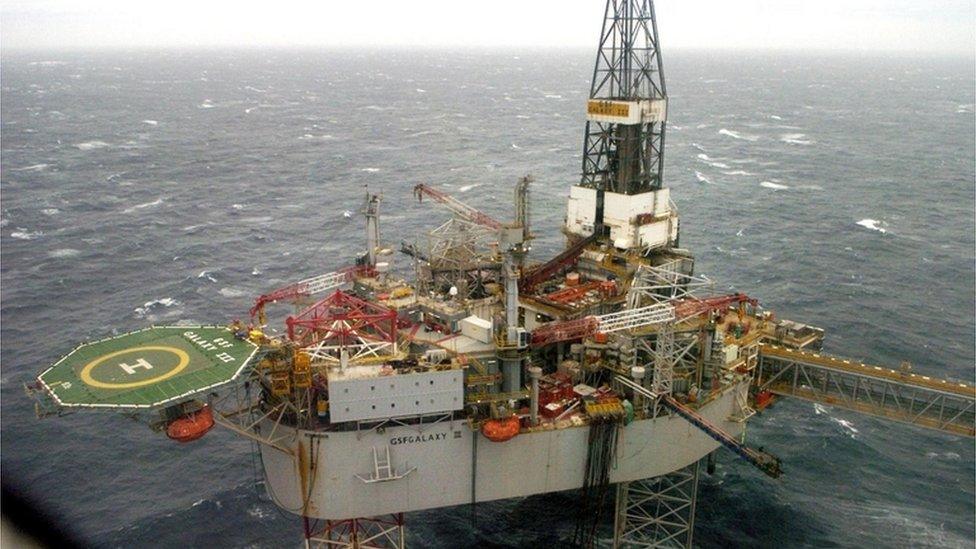Weak links down the chain
- Published

Drager Safety UK wants this week to trumpet its success at winning contracts worth £3m, supplying safety equipment to the oil and gas sector.
For Wood, the Aberdeen-based oil services giant which has dropped the word "Group" from its brand, that wouldn't go far.
It has just announced revenues of more than $6bn last year. That's up, though profits are down, as it digests AMEC Foster Wheeler, the recently-acquired and very large competitor in the business of oilfield services.
Already this year, Wood has announced a contract to design and project manage the world's biggest integrated refinery and petrochemical plant in Saudi Arabia.
They are at two ends of a sprawling industry supply chain, much of it the little-known beyond its own business clients.
But it is essential to ensuring the oil major household names, and some new operators in the UK North Sea, are able to produce 1.8 million barrels of oil (or its gas equivalent) each day.
The past four years have been "tumultuous" for the offshore energy sector, according to Oil and Gas UK. Its 2018 business update shows signs of upturn, helped by higher market prices.
'Major concern'
But the legacy continues longer for the smaller fish in Britain's corporate waters. A third of firms in the supply chain say revenue picked up last year, after some very sharp falls. But the total revenue in the supply chain is expected to fall again this year.

In 2014, it stood at £41bm, including a lot of exports. By last year, that was at £27bn, and this year could see it down to £25bn.
Oil and Gas UK, the trade association, says "the free cash flow of many businesses remains a major concern".
The mixed picture means sectors within the sector are doing better. As one indicator, share prices of quoted companies are back where they were before the slump.
Among the better protected sectors: if you're providing a floating production vessel, you probably have a contract anyway, and have less to worry about. Caterers likewise (offshore drilling is hungry work).
But at the "most affected" end of the spectrum are geoscience, subsea equipment makers, pipe-laying and heavy lift contractors, training firms and communications.
Tight margins
The most recent figures on insolvencies points to an industry high last year, and the 2018 report is not lowering the warning level.
Any downturn in any sector involves a shakeout and casualties. This cycle within the UK offshore industry, because of its maturity, carries longer term concerns that there won't be the supply chain in place when the orders start coming back.
It's pointed out that some have kept going by taking on work at very tight margins. Their costs could begin to rise, as the pressure comes off the industry.
Others are being ferociously squeezed through slow payment of bills by their clients. Some survive only by passing on that practice further down the supply chain.
The other way of surviving is by shedding staff, and that's where the trade association raises further concern that the loss of valuable skills could mean "long term structural damage".
The advice for such firms is to look outside the hydrocarbon business, to deploy those skills in renewable energy or nuclear, for instance.
Exports are encouraged, though they're down due to the worldwide squeeze on the industry. They hit £16.2bn in 2014, and were £12.3bn only two years later - about 43% of revenue in the supply chain. As the North Sea matures, that's where the growth prospects are.
Drilling into the numbers
Among the skills that seem most at risk look like drilling. While people can go around the world with those skills and come back, there is pressure to scrap the older rigs, or lose them to busier 'basins' of the world. That makes the price more volatile for remaining ones in north-west Europe.
Without drilling, the longer-term prospects for the UK offshore sector look like tailing off much faster than expected.

If you take the 33 fields that have come on stream between 2014 and 2017, at peak, they will reach around 635,000 barrels per day - roughly a third of current production. That's a reflection of how fast other fields are depleting.
New fields are needed to fill the gap, if the industry is to maintain momentum (not forgetting this is a controversial industry, producing a product that many would wish to see kept under the seabed, and its momentum stopped dead).
Yet even if there is approval for all the promising crop of projects reaching a Final Investment Decision this year, that still would not provide enough replacement for the current level of production.
And don't assume that each successful find is like the old days. Ineos can claim to have fond what seems to be a very large prospect at the Lyon field, estimating there may be enough gas to supply Britain for a year - possibly the country's 12th biggest gas field.
But one telling comparison from the Oil and Gas UK report is between the average successfully drilled well in the early days of North Sea, unlocking 73m barrels of oil. In more recent years, that same average successful well has only 9m barrels. They're aiming for very much smaller deposits, having exploited the big fields already.
So while production has risen by 16% since 2015, and could rise again this year, driven up by the effects of the pre-price-crash investment boom, the expected profile of UK output returns to decline from 2020. If drilling remains so disappointing, the decline could be much steeper than previously forecast.